Agreed, but if Allen posted both as a PDF, I managed to miss it.Do not work with the downloaded files. It is an easy task to print the mouldes and all other details from a cad file as PDF. The only thing to remember is that you have to print the PDF with 100% size.
If you need help there, I can assist you.
-

Win a Free Custom Engraved Brass Coin!!!
As a way to introduce our brass coins to the community, we will raffle off a free coin during the month of August. Follow link ABOVE for instructions for entering.
-
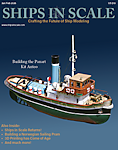
PRE-ORDER SHIPS IN SCALE TODAY!
The beloved Ships in Scale Magazine is back and charting a new course for 2026!
Discover new skills, new techniques, and new inspirations in every issue.
NOTE THAT OUR FIRST ISSUE WILL BE JAN/FEB 2026
You are using an out of date browser. It may not display this or other websites correctly.
You should upgrade or use an alternative browser.
You should upgrade or use an alternative browser.
- Joined
- Oct 23, 2018
- Messages
- 875
- Points
- 403

Allan has offered that he will prepare it for you. Have you send him a PM?
I did, in fact, miss that. Thank you for pointing it out.Allan has offered that he will prepare it for you. Have you send him a PM?

I THINK I have it figured out. Below is a PDF of the cutter at 1:50 scaleIf you need help there, I can assist you.
Allan
Attachments
The full frames and half frames are in place so time to start the planking. Photos coming soon, but one of the things sometimes missed on lapstrake planking is the application of lap and gain. It is not a difficult thing to do, but makes a big difference in seating the forward end of the planking at the rabbet in the stem. Lap and gain is shown below.
QUESTION: Is lap and gain applied at the transom as well as at the stem, or is the transom notched to maintain the clinker construction? I found nothing about this in Lavery's Arming and Fitting, May's The Boats of Men of War, Steel's The Elements and Practice of Naval Architecture, or anywhere on the internet.
Thanks
Allan
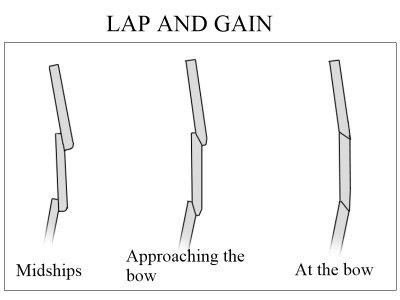
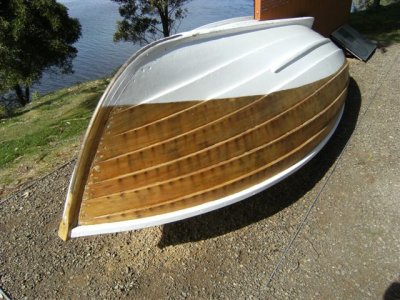
Is this correct for 18th century cutters or was there lap and gain at the transom?
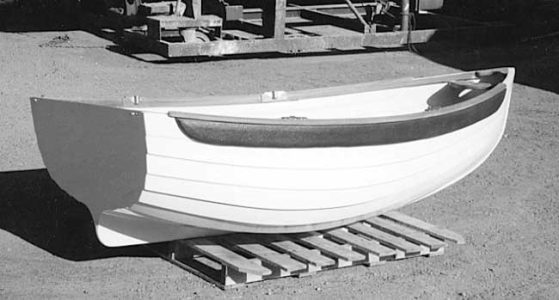
QUESTION: Is lap and gain applied at the transom as well as at the stem, or is the transom notched to maintain the clinker construction? I found nothing about this in Lavery's Arming and Fitting, May's The Boats of Men of War, Steel's The Elements and Practice of Naval Architecture, or anywhere on the internet.
Thanks
Allan


Is this correct for 18th century cutters or was there lap and gain at the transom?

Last edited:
Further to the previous post, I just had a pleasant phone conversation with David Antscherl about the lap and gain at the transom. He agreed that there is virtually no information on the lap and gain at the transom based on his own research over the years and without the Waback machine, a concrete answer may not be available. We concluded that either lap and gain or notching the transom is required to seal the planking to the transom. Perhaps one boat yard used one method while another used the other method. If any member has more information that they can share that would be terrific. I am putting on the garboard strakes but will hold off on the next strake for a day or so and continue to search for an answer, although my expectation of success is small, at best.
Allan
Allan
Removed.
Last edited:
- Joined
- Apr 12, 2025
- Messages
- 285
- Points
- 158

I wish I had a dime for every time David mentioned that 'wayback-machine' to me. I need to buy a model of Rod Taylor's time machine and bash it into reality!and without the Waback machine, a concrete answer may not be available.
Watch which way you go. Don't want any Morlocks in your vicinity. Now that I think about it, a sequel to the Time Machine with travel to the past could be interesting with throwing in made up stuff. But I digress........Rod Taylor's time machine
- Joined
- Sep 10, 2024
- Messages
- 962
- Points
- 353

I wish I had a dime for every time David mentioned that 'wayback-machine' to me. I need to buy a model of Rod Taylor's time machine and bash it into reality!
Wrong reference. The WABAC machine comes from a segment on The Adventures of Rocky and Bullwinkle and Friends called Peabody's Improbable History with Mr. Peabody and Sherman. If you're going to snark on Allan (not David), at least get your facts straight!

- Joined
- Jun 29, 2024
- Messages
- 1,448
- Points
- 393

When in doubt, what is the simplest solution? Notch the transom! If you look at the geometry of the stem, the need to taper the bow to a sharp point makes this impossible. Hence the use of gains to minimize the width of the bow. That problem does not exist at the transom.
Roger
Roger
QUESTION: Is lap and gain applied at the transom as well as at the stem, or is the transom notched to maintain the clinker construction? I found nothing about this in Lavery's Arming and Fitting, May's The Boats of Men of War, Steel's The Elements and Practice of Naval Architecture, or anywhere on the internet.
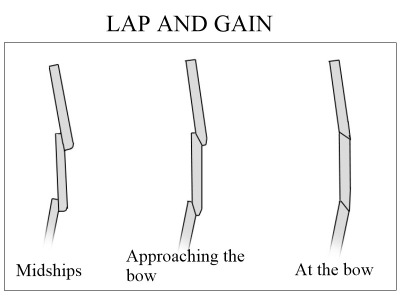
Hi Allan,
I know you know what a lapstrake gain is, but I've never seen one that looked like the diagram in your post. Notice that the diagram "At the bow" shows what are angled carvel butted plank edges which would require caulking (or gluing) to make the lapped seams watertight. It would be nearly impossible, short of smearing some sort of polysulfide seam sealant all over the juncture between the lapped section of each plank and the gained segment as the two planking systems, lapped and carvel, transition. This is not the way I've ever seen a gain constructed.
A lapstrake planking gain is constructed by cutting sloping rabbets of equal depth in the faying surfaces of both planks, such that the thickness of each plank at the stem is reduced by half. These two halves yield a plank thickness at the end of the gain of a single plank. The length of the sloped overlapping rabbets determines the length of the gain, which will appear as a transition from a lap to a flat at the bow. The determination of the length of the sloped rabbets is aesthetically critical. A longer, thinner "fine lined" pulling boat will want a longer gain than a short, beamy, dinghy will. The point of the gain being no more than half the thickness of the plank is to retain a plank overlap which can be fastened through both planks for the lapped planks' entire length. This preserves the uniformity of the mechanics of making the lapstrake hull watertight, i.e. the plank faces swelling and pressing against each other.
Obviously, if the boat is double-ended, gains will be cut in the after end of the hull diminishing to the sternpost. Lapstrake transom construction requires a fashion piece (i.e. an aftermost frame defining the shape of the transom to which the transom cross-planking will be fastened and caulked. I cannot recall ever seeing a gain cut at the transom end, either. The only reason I can imagine anyone would want to do so would only be to reduce the size of the lap only partially for aesthetic effect where a partially diminishing plank edge thickness towards the transom would be more graceful than otherwise (particularly where there's some tumblehome.) The fashion piece edge is jogged to present a tight faying surface to the plank faces. (This seam will sometimes be caulked carvel-fashion.) The transom planking will be hung on the fashion piece (inside the protruding untrimmed plank ends) and other stern framing if present and caulked carvel-fashion. The plank ends will then be trimmed off even to the transom face with the plank end grain outboard.
As usual, a picture is worth a thousand words and a video ten thousand words:
Last edited:
Since we’re building models here, rather than actual sea-worthy vessels, would anyone be able to tell the difference, short of disassembling the model?
- Joined
- Apr 12, 2025
- Messages
- 285
- Points
- 158

You'd see the very visible lapstrake 'overlap' vs a smooth surfaced plank gain.Since we’re building models here, rather than actual sea-worthy vessels, would anyone be able to tell the difference, short of disassembling the model?
I’m referring to Bob’s point about rabbeting the gain vs beveling it.You'd see the very visible lapstrake 'overlap' vs a smooth surfaced plank gain.
- Joined
- Apr 12, 2025
- Messages
- 285
- Points
- 158

Oops! Sorry 'bout that!I’m referring to Bob’s point about rabbeting the gain vs beveling it.

Thanks to everyone for their input, I really appreciate you taking the time to respond. Even at 1:36, removing wood to achieve the end result of carvel type butts is no more than scraping a little wood with a scalpel. I am guessing hat the sealing between this area of the planking would not be any different than a carvel built hull.
Regarding the stern area, I cannot find any contemporary model or drawing showing if the lap and gain or notching of the transom was the predominant solution. In this case, with two strakes in place with lap and gain I made my choice for this time. Hope it is a good one.

Allan
Regarding the stern area, I cannot find any contemporary model or drawing showing if the lap and gain or notching of the transom was the predominant solution. In this case, with two strakes in place with lap and gain I made my choice for this time. Hope it is a good one.
Stupid me, I just went with the flow.... doahhh..... You are absolutely correct and I know better.The Adventures of Rocky and Bullwinkle and Friends

Allan
Last edited:
You'd see the very visible lapstrake 'overlap' vs a smooth surfaced plank gain.
You'd also have a whole bunch of overlapping plank ends at the stem with nowhere to put them!
I suppose a modeler in a sufficiently small scale might attempt to not cut gains and instead try to fair the lapped plank ends by sanding, but that would be at the cost of maintaining the fair shape of the planked hull and the plank ends at the stem would be perilously thin.
Three examples of lapstrake construction with gains tapering the laps at the bow:
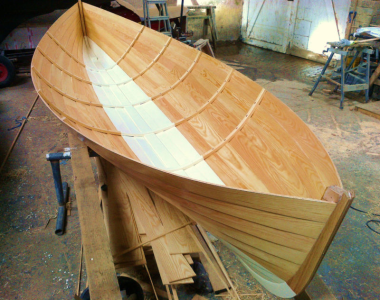

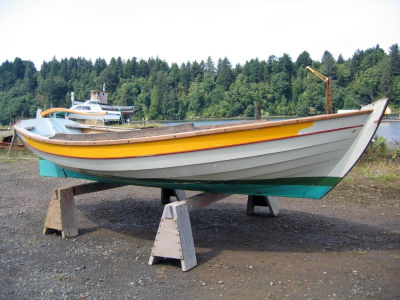
Simple lapstrake transom without gains aft:
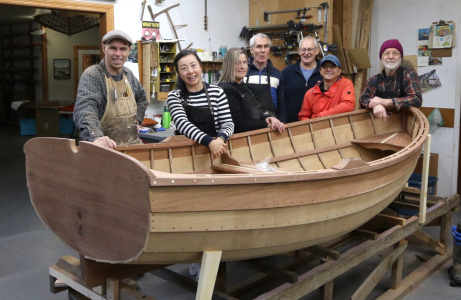
Lapstrake Whitehall-style pulling boat with gains tapering laps aft to the transom edge:
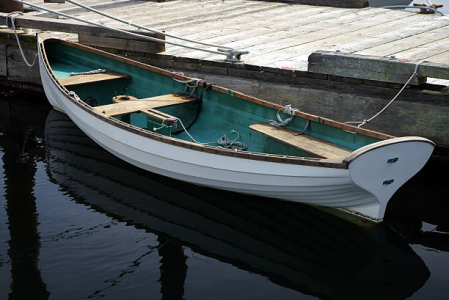
Lapstrake Whitehall-style pulling boat with long gains tapering laps aft below the waterline:
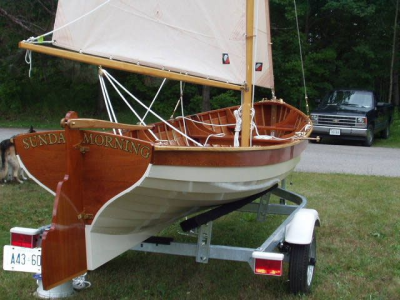
Keelboat with long gains tapering laps aft below the waterline fairing into the deadwood:
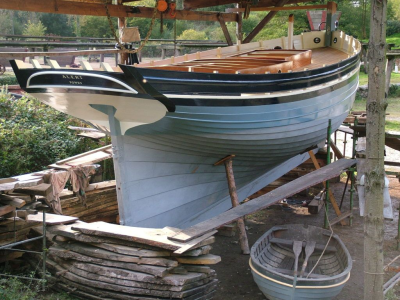
I’m referring to Bob’s point about rabbeting the gain vs beveling it.
Ah-ha! Good question!
It does appear that working a rolling bevel out of the lapped faying surface, as I now realize Allan's diagram suggests, actually, just might work for modeling purposes. It would take some tricky layout and plane work to ensure even, graceful "vanishing" of the lap edges into a flat surface just aft of the stem rabbet. Epoxy adhesive might be advisable using such an approach. I'm not sure it would be easier than working in the gains. Gains are flat and don't demand a rolling bevel which is about as tricky a cut as there is. The even, progressive thinning of the plank laps to dead flat a uniform distance aft of the stem rabbet is a signature characteristic of lapstrake planking and because the laps create parallel lines, the eye is drawn to any irregularity in their relationship to one another.
Thanks for posing the photos of the boats Bob! Now that I see both styles aft I am not uncomfortable with the lap and gain I am using both fore and aft.
Keep in mind that the strakes on this cutter were only 5/8" thick so at 1:36 it is 0.017" less than 1/2mm at scale. I am cheating a bit as the thinnest stock material I can find on line are sheets 0.025" thick from Modeler's Sawmill. I have a thickness sander so can make up my own supply at the thickness inthe scantlings, but I am still trying to keep this project going with only hand tools, both power and manual.
I cut the strakes from sheets after marking out the breadth forward, midships and aft to get the proper taper. At this thickness it cuts very easily with a razor and straight edge. I then scrape a slight taper on the edge that will receive the next strake, then soak the shaped pieces in water for at least 30 minutes.
Once sufficiently soaked I clamp the piece on the boat and hit it with a hot air gun. It takes less than a minute to dry and hold its shape.
Allan
Soaked plank temporarily clamped in place
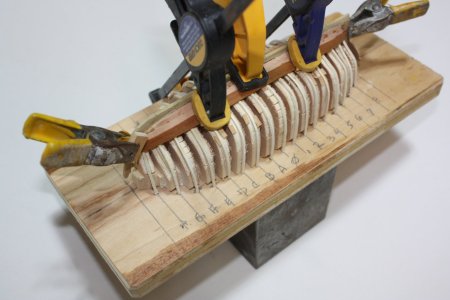
Drying the plank
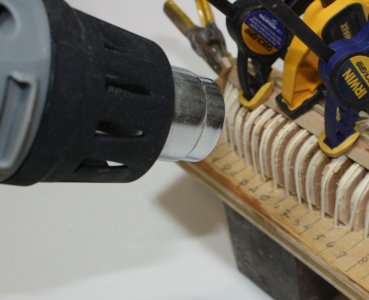
Keep in mind that the strakes on this cutter were only 5/8" thick so at 1:36 it is 0.017" less than 1/2mm at scale. I am cheating a bit as the thinnest stock material I can find on line are sheets 0.025" thick from Modeler's Sawmill. I have a thickness sander so can make up my own supply at the thickness inthe scantlings, but I am still trying to keep this project going with only hand tools, both power and manual.
I cut the strakes from sheets after marking out the breadth forward, midships and aft to get the proper taper. At this thickness it cuts very easily with a razor and straight edge. I then scrape a slight taper on the edge that will receive the next strake, then soak the shaped pieces in water for at least 30 minutes.
Once sufficiently soaked I clamp the piece on the boat and hit it with a hot air gun. It takes less than a minute to dry and hold its shape.
Allan
Soaked plank temporarily clamped in place

Drying the plank



